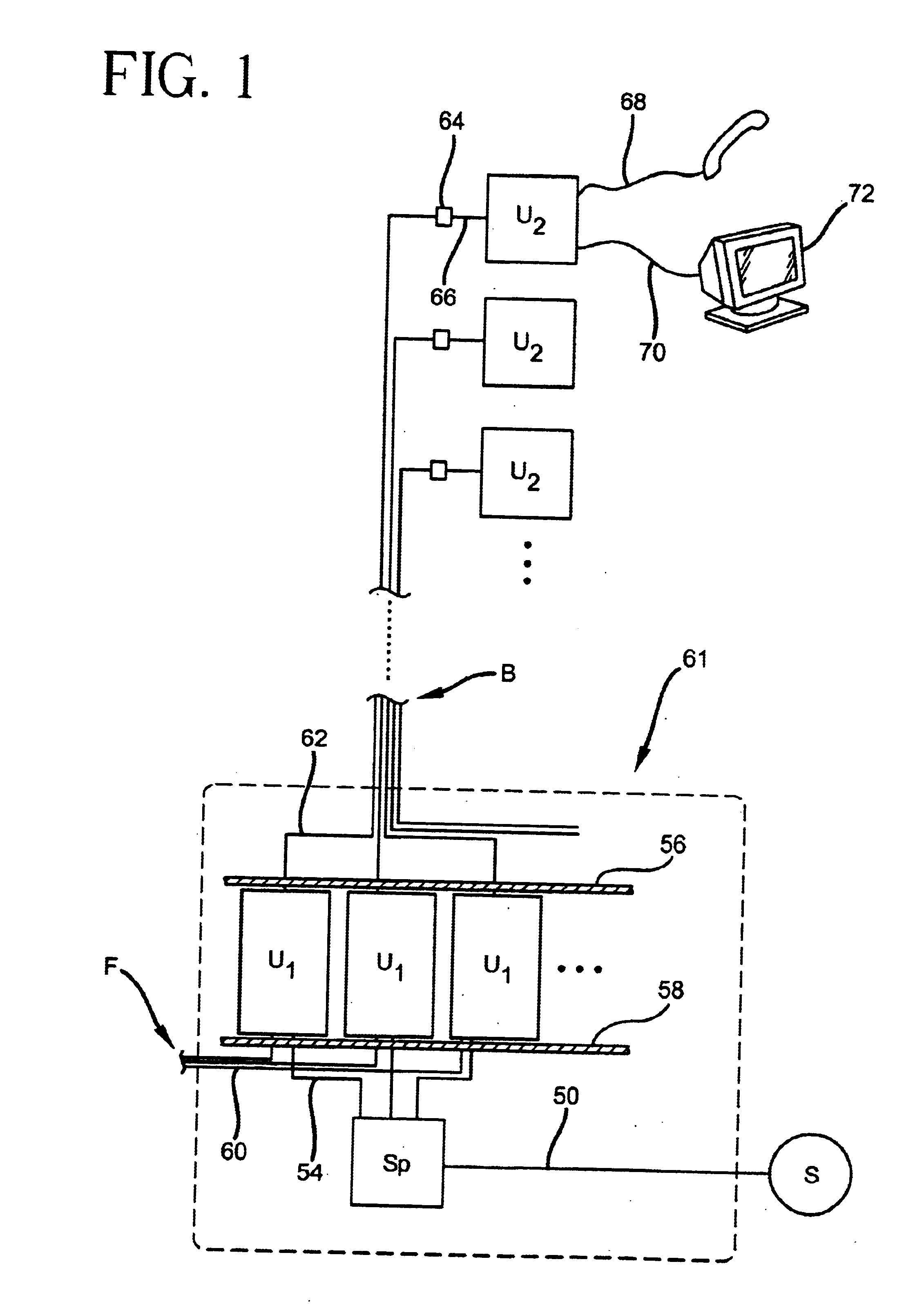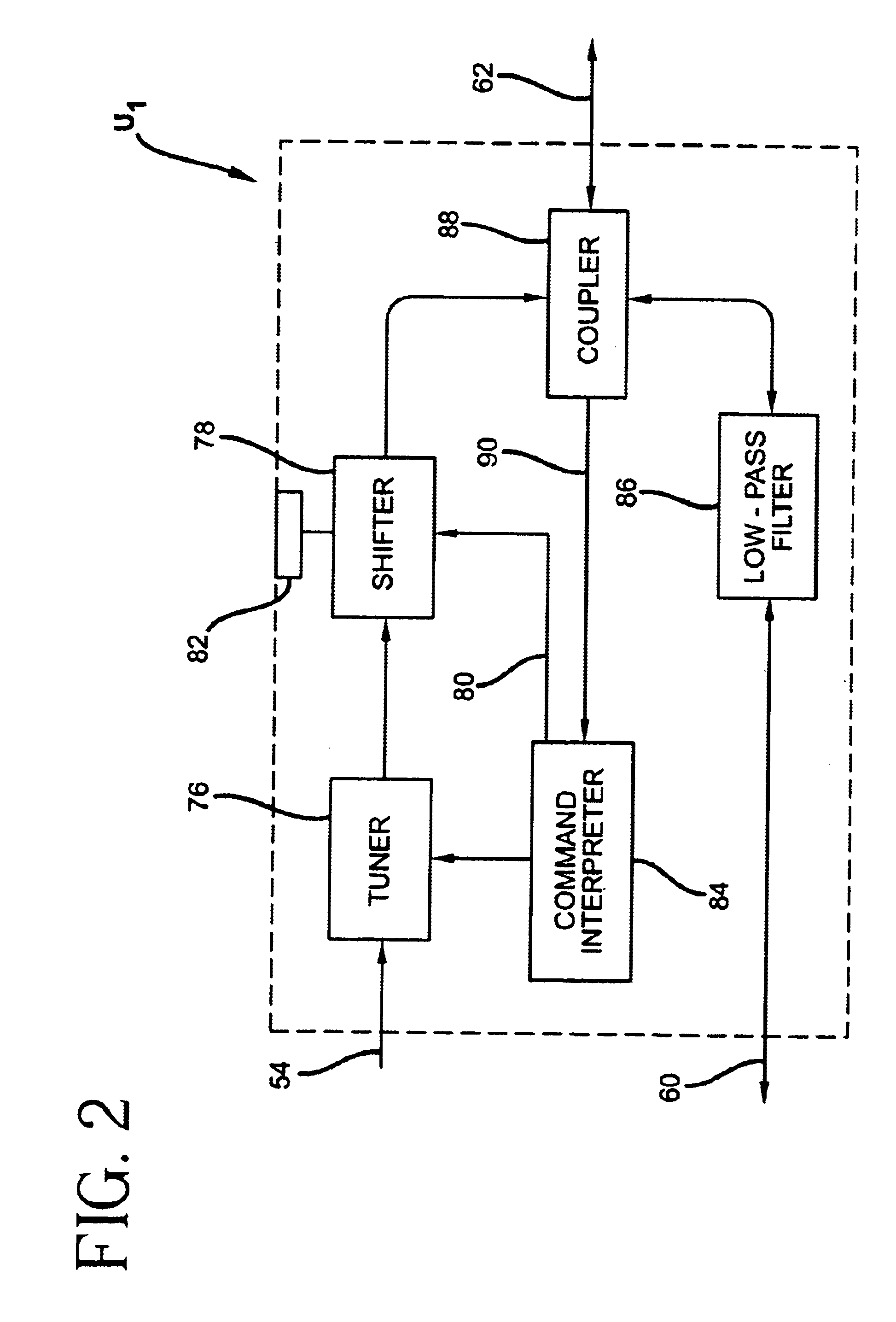Video transmission system and method utilizing phone lines in multiple unit dwellings
a video transmission system and phone line technology, applied in the field of video distribution systems, can solve the problems of affecting the attractiveness of the network in the same structure, the difficulty of distributing alternative source signals over proprietary cables, and the laborious cost of wiring a building for cabl
- Summary
- Abstract
- Description
- Claims
- Application Information
AI Technical Summary
Benefits of technology
Problems solved by technology
Method used
Image
Examples
Embodiment Construction
For simplicity in what follows, a partially process oriented description will be adopted, in which a general direction of signal flow suggests an implicit fictitious temporal ordering in the description of static structural relations between system components. It will be readily comprehended that such a description comprises information on the structural, functional and methodic elements of the instant invention, without the necessity of independent description thereof.
In a first system for the distribution of video program information over subscriber telephone lines, a source or central distribution node S delivers a multiple channel feed into consumer or commercial premises via inside feeder cable 50 (FIG. 1). Source S may comprise an antenna, such as a satellite dish antenna (not illustrated), and related electronics, or a buried coaxial cable (not illustrated). Cable 50 terminates in a splitter Sp, which provides the signal present on cable 50 to a multiplicity of distributor ca...
PUM
 Login to View More
Login to View More Abstract
Description
Claims
Application Information
 Login to View More
Login to View More - R&D
- Intellectual Property
- Life Sciences
- Materials
- Tech Scout
- Unparalleled Data Quality
- Higher Quality Content
- 60% Fewer Hallucinations
Browse by: Latest US Patents, China's latest patents, Technical Efficacy Thesaurus, Application Domain, Technology Topic, Popular Technical Reports.
© 2025 PatSnap. All rights reserved.Legal|Privacy policy|Modern Slavery Act Transparency Statement|Sitemap|About US| Contact US: help@patsnap.com



